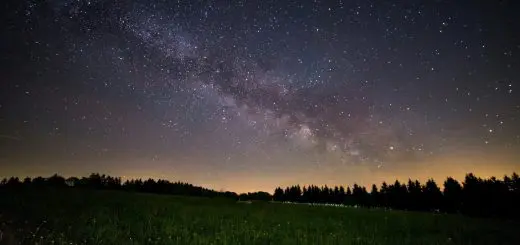Spanish Empire Countries: Full Breakdown

Looking for more amazing products? Check out our online store and explore our collection here! Happy shopping!
Before diving in, please note: This post is for informational purposes only. If you’d like to know more about how we approach topics, feel free to check out our friendly Disclaimer Page.
Hey there, amazing readers! 
We’re committed to delivering quality posts, and your support (even just sticking around despite the ads) means everything to us. So, bear with us, and thanks for helping us keep the good vibes rolling. Now, on to the fun stuff!
TRANSLATE BUTTON AT THE END OF THE ARTICLE
A Quick Overview
The Spanish Empire was one of the largest empires in history, stretching across continents and leaving a profound legacy that still resonates today.
Imagine a time when Spain ruled vast territories in Europe, the Americas, Africa, and Asia.
The empire was a beacon of exploration, trade, and cultural exchange.
But what did this empire encompass, and how did it forge the modern world as we know it?
In this article, we’ll embark on an eye-opening journey through the countries that were part of this mighty empire, examining its influence, richness, and the lasting impact it has left behind.
A Brief Introduction to the Spanish Empire’s Legacy
The Spanish Empire’s legacy is a tapestry woven with threads of exploration, colonization, and cultural fusion.
Founded in the late 15th century, it reached its zenith in the 17th century when Spain became a global superpower.
The empire was driven by a quest for riches, fame, and religious conversion.
Spain’s explorers set sail across uncharted waters, discovering new lands and peoples.
Spain’s impact on the world is immense.
From the spread of the Spanish language to the introduction of novel crops and culinary traditions, the empire shaped regions far beyond its borders.
While the empire has faded, its cultural fingerprints remain deeply embedded in many countries.
Today, over 500 million people speak Spanish, and the influence of Spanish food, music, and customs is felt in many societies.
It’s essential to recognize the darker aspects of this legacy, too.
The conquests often led to the exploitation of indigenous peoples and cultures.
The Spanish Empire’s story is a complex one, filled with triumphs and tragedies, and understanding it helps us appreciate the world we live in today.
The Mighty Reach: Where the Spanish Empire Once Stood
The Spanish Empire was a sprawling entity.
At its peak, it encompassed vast regions of the globe:
Europe: Besides Spain, it included parts of Italy, the Netherlands, and Portugal.
The Americas: From present-day Mexico down to southern South America, the empire had a firm grip on much of the continent.
The Caribbean: Islands like Cuba, Puerto Rico, and Hispaniola were vital to Spanish interests.
Africa: The empire held territories such as Western Sahara and Equatorial Guinea.
Asia: The Philippines was a crucial outpost, linking trade routes between the Americas and Asia.
In essence, the Spanish Empire was a world unto itself, connecting diverse cultures and peoples across oceans.
It created a web of trade and cultural exchange that continues to influence global dynamics today.
A Glimpse at Spain: The Heart of the Empire
Spain itself was both the heart and the soul of the empire.
Imagine bustling cities like Seville and Barcelona, where merchants traded exotic goods from distant lands.
The Spanish monarchy played a pivotal role in funding explorations.
Monarchs like Ferdinand and Isabella commissioned voyages that changed the course of history.
Spain’s rich cultural heritage also flourished during the empire’s height.
The arts, literature, and philosophy experienced a golden age.
Writers like Miguel de Cervantes and artists like Diego Velázquez produced works that are celebrated around the world.
Their contributions laid the groundwork for modern Western culture.
While the empire expanded, Spain faced internal challenges too.
Regional tensions and economic fluctuations often plagued the monarchy.
Spain’s incredible wealth from its colonies created inequalities at home, sparking social unrest.
Yet, despite these challenges, Spain’s influence was undeniable.
It set the stage for exploration and colonization that would shape the history of nations across the globe.
Mexico: The Jewel of New Spain’s Treasures
Mexico was the crown jewel of the Spanish Empire, rich in resources and culture.
When Hernán Cortés arrived in 1519, he encountered the mighty Aztec Empire.
The riches he discovered transformed Spain’s economy.
Gold and silver poured into Spain, fueling its ambitions and laying the groundwork for a global trading system.
The fusion of Spanish and indigenous cultures gave birth to a vibrant Mexican identity.
Colonial architecture, such as the stunning churches and cathedrals, can still be seen today.
The Spanish also introduced European crops and livestock, which reshaped local agriculture.
Mexico’s struggle for independence began in the early 19th century, culminating in its revolution against Spanish rule.
Today, Mexico’s history is a testament to resilience and cultural pride.
The festivals, traditions, and cuisine reflect this rich heritage, from Día de los Muertos to tacos and mole.
By exploring Mexico’s journey from conquest to independence, we appreciate how the legacy of the Spanish Empire is woven into the fabric of modern Mexican life.
South America: Spanish Influence Across the Continent
The influence of the Spanish Empire in South America is profound.
Countries like Peru, Chile, Argentina, Colombia, and Venezuela were all under Spanish control at different points.
Each nation has its unique story, but they share common threads rooted in the Spanish colonial experience.
Peru is particularly noteworthy, home to the Inca civilization.
The Spanish conquest led by Francisco Pizarro saw the fall of this great empire.
The Spanish brought Christianity, language, and European customs, which blended with indigenous practices over centuries.
In Argentina, the Spanish established Buenos Aires as a key port city.
The tango, a dance that embodies the spirit of Argentina, has its roots in the cultural melting pot created by Spanish and immigrant influences.
As these nations fought for independence in the 19th century, they sought to break free from colonial rule.
Leaders like Simón Bolívar and José de San Martín emerged, spearheading movements that reshaped the continent.
Today, the countries of South America showcase a rich tapestry of cultures, languages, and traditions, all remnants of their colonial past.
The Caribbean Islands: A Colorful Spanish Heritage
The Caribbean is a vibrant tapestry of cultures, and Spanish influence is significant here.
Islands like Cuba, Puerto Rico, and the Dominican Republic were integral to the Spanish Empire’s economy and culture.
The Caribbean served as a crucial hub for trade and resources.
Cuba, for instance, has a rich history deeply intertwined with Spain.
Spanish colonial architecture contrasts beautifully with the island’s lush landscapes.
The culture is a delightful mix of Spanish, African, and indigenous influences.
Cuban music and dance, such as salsa and son, reflect this unique heritage.
Puerto Rico, a U.S. territory today, retains its Spanish roots.
The language, customs, and food reflect the island’s colonial past.
Festivals celebrating local culture often feature Spanish traditions, showcasing a vibrant community spirit.
The Dominican Republic, too, is a prime example of the Spanish legacy.
Its capital, Santo Domingo, is home to the oldest continuously inhabited European settlement in the Americas.
This rich history is celebrated in its architecture, festivals, and culinary traditions.
The Caribbean islands are not just beautiful vacation spots; they are living testaments to the colorful history of Spanish colonization.
Central America: The Cradle of Spanish Colonization
Central America is where the Spanish empire began to take root.
Countries like Guatemala, Honduras, El Salvador, Nicaragua, and Costa Rica were all vital to Spanish expansion.
The region is home to remarkable archaeological sites, such as Tikal and Copán, which showcase the impressive civilizations that thrived before colonization.
The Spanish presence in Central America began in the early 16th century.
Conquistadors sought gold and glory, often clashing with indigenous groups.
The aftermath of this conquest was a blend of cultures, religions, and languages that shaped the region’s identity.
Today, Central America reflects a complex history.
The legacy of Spanish rule is evident in the widespread use of the Spanish language and the influence of the Catholic Church.
Traditional customs often blend indigenous beliefs with Spanish traditions, such as in festivals and celebrations.
Despite facing challenges like political instability and economic inequality, Central American countries continue to celebrate their rich cultural heritage.
This mix of influences creates a unique flavor that is distinctly Central American.
North America: Spanish Claims Beyond the South
Did you know that parts of the United States were once under Spanish control?
The Spanish Empire extended into North America, claiming vast territories in the Southwest.
Florida, Texas, California, and New Mexico were integral parts of the empire.
Florida was the first region settled by Europeans in the U.S., with St.
Augustine being the oldest continuously inhabited European settlement.
Spanish explorers ventured through the region, leaving a mark that remains evident today in place names and cultural practices.
Texas also has deep Spanish roots.
The state’s mission system brought the Catholic faith to the region.
The influence of Spanish architecture and cuisine can be found in cities like San Antonio and El Paso.
California, famous for its beaches and vineyards, was once part of the Spanish mission system.
The missions established by Spanish Franciscans played a crucial role in spreading Christianity and agriculture.
As North America evolved, Spanish influence remained.
Today, the blended cultures of these regions create a rich tapestry that reflects a shared history, showcasing the diversity of the United States.
The Philippines: East Meets West in Spanish Rule
When we think of the Spanish Empire, we often overlook its presence in Asia, particularly in the Philippines.
Spanish colonization began in 1565 and lasted for over three centuries.
This period had a profound effect on the islands.
Spanish explorers established trade routes that connected the Philippines to Mexico and Spain.
The result?
A flourishing trade network that brought goods and ideas together.
The influence of Christianity is still visible today, with a majority of Filipinos identifying as Catholic.
Culturally, the Philippines is a fascinating mix of East and West.
Festivals, cuisine, and traditions reflect this unique blend.
Lechon, a popular dish, and fiestas celebrate this cultural heritage.
Traditional Filipino music often incorporates Spanish influences, creating a vibrant artistic scene.
Though the Philippines gained independence in the late 19th century, the legacy of Spanish rule lingers.
The Spanish language, although less spoken now, still influences Filipino languages.
The remnants of colonial architecture and traditions serve as a reminder of this historical connection.
Cultural Riches: Language, Food, and Traditions
The influence of the Spanish Empire is most visible in the languages, food, and traditions of the countries it once ruled.
Spanish is the second most spoken language in the world, a testament to the empire’s reach.
Even in countries that don’t primarily speak Spanish, like the Philippines, the language’s influence remains evident.
Food is another significant aspect of Spanish heritage.
Think of paella, tapas, and churros—all of these dishes have made their way into global cuisine.
In many Latin American countries, you’ll find unique variations that blend indigenous ingredients with Spanish cooking techniques.
Traditions are equally fascinating.
Festivals like Día de los Muertos in Mexico or Semana Santa in Spain showcase the vibrant cultural tapestry.
These celebrations often incorporate elements from indigenous practices and Christianity, creating unique expressions of identity.
The arts also flourished under Spanish influence.
Many countries celebrate their artistic heritage through music, dance, and literature.
Flamenco, tango, and mariachi tell stories that resonate with people worldwide.
In essence, the legacy of the Spanish Empire lives on through the cultural richness that continues to shape societies around the globe.
Independence Movements: Breaking Free from Spain
The 19th century was a tumultuous time for the Spanish Empire as colonies across the world sought independence.
The desire for self-determination was fueled by Enlightenment ideals and the example of revolutions in America and France.
In Latin America, independence movements gained momentum in the early 1800s.
Leaders like Simón Bolívar in Venezuela and José de San Martín in Argentina inspired others to fight for freedom.
The struggle was often brutal, marked by battles and uprisings.
Mexico’s fight for independence began in 1810, led by figures like Miguel Hidalgo y Costilla.
After years of conflict, Mexico finally declared independence in 1821.
The echoes of these movements can still be felt today, as nations celebrate their freedom and identity.
The Philippines also experienced a struggle against Spanish colonial rule.
The revolution began in the late 19th century and culminated in the declaration of independence in 1898, although foreign powers continued to influence the islands.
These independence movements not only ended colonial rule but also paved the way for the development of national identities.
The stories of courage and resilience during these times remind us of the importance of self-determination and cultural pride.
The Lasting Impact of the Spanish Empire Today
The legacy of the Spanish Empire is undeniable and continues to shape our world.
The Spanish language is spoken by millions, making it one of the most influential languages globally.
The cultural practices, traditions, and food from former colonies enrich societies worldwide.
In many countries, Spanish influences are celebrated in art, music, and dance.
Flamenco in Spain, salsa in Cuba, and tango in Argentina are just a few examples of how this heritage endures.
The ongoing global interest in these traditions highlights their importance in contemporary culture.
Economically, many nations that were once part of the Spanish Empire maintain strong ties with Spain.
Trade, tourism, and investment continue to connect these countries, showcasing the lasting impact of their shared history.
Furthermore, the challenges of post-colonial societies also remind us of the complexities of the empire’s legacy.
The struggles for social justice, equality, and cultural preservation highlight the ongoing journey of nations seeking to define their identities.
In summary, the Spanish Empire’s story is one of exploration and exploitation, fusion and identity.
As we look at its countries, we see a rich history that has shaped our modern world in profound ways.
Conclusion
The Spanish Empire, with its vast territories and cultural influence, has left an indelible mark on many countries around the globe.
From Mexico’s rich heritage to the vibrant cultures of South America and the Caribbean, the legacy of this empire is a fascinating tale of triumphs and challenges.
It offers a glimpse into our interconnected past while illuminating the cultural richness we celebrate today.
As we navigate the complexities of history, let’s remember the stories, traditions, and resilience that continue to shape our world, reminding us that history is never just a thing of the past—it lives on in every corner of our vibrant societies.

The Enlightenment Journey is a remarkable collection of writings authored by a distinguished group of experts in the fields of spirituality, new age, and esoteric knowledge.
This anthology features a diverse assembly of well-experienced authors who bring their profound insights and credible perspectives to the forefront.
Each contributor possesses a wealth of knowledge and wisdom, making them authorities in their respective domains.
Together, they offer readers a transformative journey into the realms of spiritual growth, self-discovery, and esoteric enlightenment.
The Enlightenment Journey is a testament to the collective expertise of these luminaries, providing readers with a rich tapestry of ideas and information to illuminate their spiritual path.
Our Diverse Expertise
While our primary focus is on spirituality and esotericism, we are equally passionate about exploring a wide range of other topics and niches 

To ensure we provide the most accurate and valuable insights, we collaborate with trusted experts in their respective domains 
Our blog originally focused on spirituality and metaphysics, but we’ve since expanded to cover a wide range of niches. Don’t worry—we continue to publish a lot of articles on spirituality! Frequently visit our blog to explore our diverse content and stay tuned for more insightful reads.
Hey there, amazing reader! 
Check out our store here and take a peek at some of our featured products below! Thanks for being awesome!











